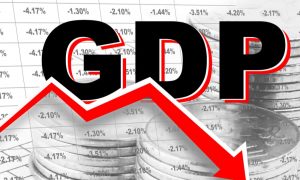 Prof. S.N. Misra in Bhubaneswar, January 31, 2023: The finance minister must be complimented for the last budget for increasing capital expenditure significantly (35%) and introducing the PLI scheme which has generated an export of$ 5 billion in mobile handsets. Unlike many countries like the US where the fiscal transfer was resorted to leading to very high inflation, the FM didn’t bite this populist fiscal bullet.
Prof. S.N. Misra in Bhubaneswar, January 31, 2023: The finance minister must be complimented for the last budget for increasing capital expenditure significantly (35%) and introducing the PLI scheme which has generated an export of$ 5 billion in mobile handsets. Unlike many countries like the US where the fiscal transfer was resorted to leading to very high inflation, the FM didn’t bite this populist fiscal bullet.
All the same, containing fiscal deficit while increasing CAPEX, will remain her biggest challenge for the upcoming budget. Going by the trends of the Indian economy the areas where India seems to be doing better than most countries is in the area of GDP growth (6.9% as against 4% by China).
However, inflation at hovers around 7%, exceeding the upper glide path of 4-6%. There is consensus that mitigation of unemployment, particularly in the unorganized sector would remain the most important challenge of the FM.
The growth story of India after economic liberalization is marked by a serious mismatch between the growth rate and employment generation. For instance, during 2004-09 the growth rate was around 8.4% and additional employment generation was around 0.1%. During 2015-19, the average growth rate has been around 7% with employment growth of less than 1%. This is where the role of the manufacturing sector and its potential to generate employment assumes importance.
The NIMZ policy (2011) under had set a roadmap for increasing India’s share of manufacturing from 16-25% of GDP in a decade’s time. It also envisaged the creation of 10 million jobs per year. This was based on the experiences of countries like Germany, Japan, China, Russia, and South Korea which have become global manufacturing hubs, with manufacturing accounting for 30-35% of the GDP share & high employment generation.
 As per Prof. Richard Musgrave, a good budget would reflect the better allocation of priority to social sectors and distributive justice through progressive taxation. While most developed countries spend close to 10% of GDP on social services, the corresponding figure for India is around 4.5 %. Keeping in view the New Education Policy (2020) and the National Health Policy and the serious deficiency one noticed in the healthcare infrastructure in India during the pandemic, the FM would do well to allocate 6% budget to education and 2.5 % to health in this year’s budget as against 3.5% & 1.2% being allocated now.
As per Prof. Richard Musgrave, a good budget would reflect the better allocation of priority to social sectors and distributive justice through progressive taxation. While most developed countries spend close to 10% of GDP on social services, the corresponding figure for India is around 4.5 %. Keeping in view the New Education Policy (2020) and the National Health Policy and the serious deficiency one noticed in the healthcare infrastructure in India during the pandemic, the FM would do well to allocate 6% budget to education and 2.5 % to health in this year’s budget as against 3.5% & 1.2% being allocated now.
The ASER reports bring out the serious shortfalls in foundational learning both in early childhood education and school education. Of the 14 lakhs Anganwadi centers where early childhood education is being imparted to about 3 crore children, there is a serious deficit in the capability of Anganwadi workers to teach them and the rickety infrastructure that our Anganwadi enters provide.
The NEP looks at providing basic foundational learning till the ages of 3-9 years to every child. Both the Central government & states are yet to take concrete action in this regard. The time has now come to bring down the borrowing level and abide by the fiscal discipline path delineated in the FRBM Act 2003.
In a path-breaking analysis, Prof. Kenneth Rogoff & Reinhart have brought out how a debt level of more than 90% of GDP has the potential to usher in low and negative growth. As per the latest data by the IMF India’s gross debt for the center and the state is around 90% of GDP. Budget 23-24 could signal a downward trajectory to the debt-fueled policy of India. This brings to the fore the conflicting perspective of whether to fund our social sector programs through borrowing or have a tax-propelled policy mosaic.
In its latest report, the OXFAM report has brought out how the fortune of millionaires is increasing by $2.7 billion dollar per day while inflation outpaces the wages of 1.7 billion workers. The food and energy component has doubled its profit in 2022 while 800 million people went to bed hungry.
 The world inequality report had earlier assessed how the share of the top 10% in total national income has increased from 32% in 1990 to around 58% in 2020. On the other hand, the bottom 50% which accounted for 21% of total national income in 1990, today account for only 12% of national income.
The world inequality report had earlier assessed how the share of the top 10% in total national income has increased from 32% in 1990 to around 58% in 2020. On the other hand, the bottom 50% which accounted for 21% of total national income in 1990, today account for only 12% of national income.
Quite clearly, the pro-rich tax policy after liberalization has made the top 10% richer and the bottom 50% poorer. The OXFAM report recommends a 5% tax on multimillionaires which will fetch 1.57 trillion dollars per year which will be enough to lift 2 billion poor people out of poverty. A 5% wealth tax on top billionaires like Amani and Adani will fetch 9 billion dollars which will be sufficient to meet the MNREGA budget which provides work for 100 days to about 50 million unskilled workers most of whom are in the category of SC/ST and Women. There is also a strong case for increasing the tax rate on the super-rich to around 50%.
In an interesting budget speech in 2018, Mr. Arun Jetty brought out how the number of tax return files is substantially lower than the kind of opulent consumption many Indians indulged in. He brought out how close to 15 million people deposited more than 80 lakhs during demonetization and 12.5 million cars were sold and 20mn traveled abroad. In contrast, only 1.72 lakh Indians file income tax returns. It is because of this widespread tax evasion, the tax to GDP ratio which was 13.2 % in 18-19 has plummeted now to 11.5% in 2021-22. In contrast, the total debt to GDP has gone up from 48.4% (2018-19) to around 60% now.
In the brilliant book “India is Broken”, the economic historian Ashoka Mody brings out how scant attention to the human development index has been a recurring policy deficit from Nehru to Modi.
 In our quest for GDP growth India has substantially lagged behind in the areas of socio-economic justice for the bottom 50% of its population. The SDG targets like Zero Hunger remain untranslated as 33.4% of our children are underweight and 50.4% of women are anemic as per the latest NFHS V report. In terms of the first goal of SDG to mitigate multidimensional poverty the extent of deprivation of nutrition is around 21.2 % and that of sanitation is around 24.6%. clean cooking fuel is still not available for 26 % of the population and child mortality is around 28.3%.
In our quest for GDP growth India has substantially lagged behind in the areas of socio-economic justice for the bottom 50% of its population. The SDG targets like Zero Hunger remain untranslated as 33.4% of our children are underweight and 50.4% of women are anemic as per the latest NFHS V report. In terms of the first goal of SDG to mitigate multidimensional poverty the extent of deprivation of nutrition is around 21.2 % and that of sanitation is around 24.6%. clean cooking fuel is still not available for 26 % of the population and child mortality is around 28.3%.
The road ahead for the finance minister for the budget 2023-24 would be how to create more jobs and invest more in human development while ensuring fiscal consolidation. She also has to change the track from a neo-classical approach of fueling growth through borrowing by opting for tax-propelled mechanisms.
The success story of countries like China and South Korea which were lagging behind India in 1950, veers around their solid commitment to the human development programs. We need to invest substantially more in research & development and innovation than existing allocation of .8% of GDP. The time to fund social sector programs through wealth tax & a more progressive tax on the superrich should be the leitmotif of the upcoming budget.
Professor Misra was Financial Advisor (Budget) in Ministry of Defence



Leave a Reply
Be the First to Comment!